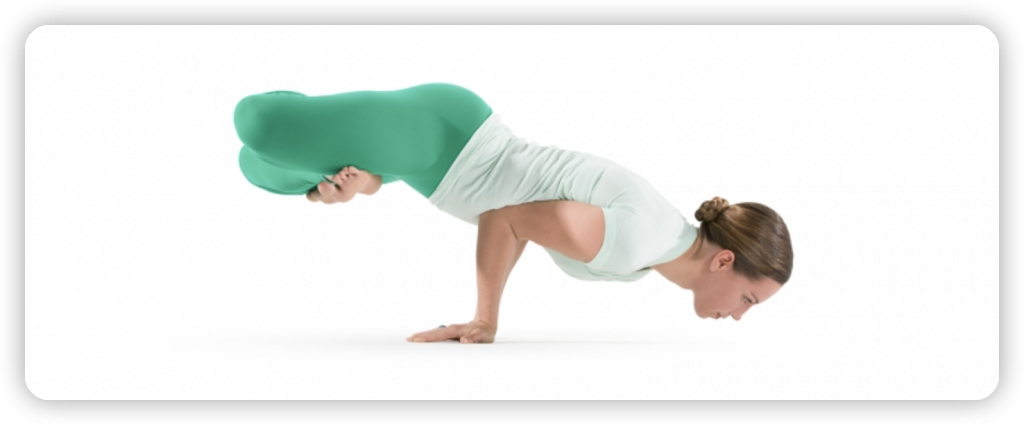
The Peacock pose, known in Sanskrit as “Mayurasana”, is an advanced arm balancing pose. This pose requires strength, flexibility, and balance, focusing mainly on the arms and core.
Here’s a concise step-by-step breakdown of The Peacock pose:
- Starting Position: Begin in the full lotus position, seated with both feet on opposite thighs.
- Place Hands on Mat: Lean forward, placing your palms flat on the mat with fingers pointing towards your knees.
- Position Elbows: Keep the elbows slightly bent and bring them together so they touch. Position them below your navel, acting as a support.
- Lean Forward: As you lean your torso forward, place your forehead on the ground to act as a counterbalance.
- Extend Legs: Straighten your knees, extending your legs behind you with the tops of your feet on the floor.
- Lift Up: Engage your core, pressing through your hands and forearms. Shift your weight forward and lift both legs and your head off the ground. Your body should be parallel to the ground, supported by your hands and forearms.
- Hold: Initially, hold for a few seconds, but as you gain strength and balance, you can hold it for longer durations.
- Release: To exit, gently lower your feet and head to the ground. Unwind from the lotus position and sit back in a comfortable position.
Benefits:
- Strengthens the arms, shoulders, and core.
- Stimulates abdominal organs aiding in digestion.
- Improves posture.
Cautions:
- Avoid if you have wrist or elbow injuries.
- Because of its advanced nature, it’s crucial to approach Mayurasana with patience and not to rush into the full pose without proper preparation.
Tips:
- If the full lotus position is too challenging, you can try this pose with legs extended straight behind you.
- Beginners can use props or a wall to assist with balance.
- If keeping the elbows together is challenging, using a strap can help.
Before attempting advanced poses like the Peacock, it’s essential to have a solid foundation in the basics. As always, if you’re new to the practice or working with injuries, it’s beneficial to seek guidance from a certified yoga instructor. They can offer modifications or adjustments to ensure you’re practicing safely and effectively.

